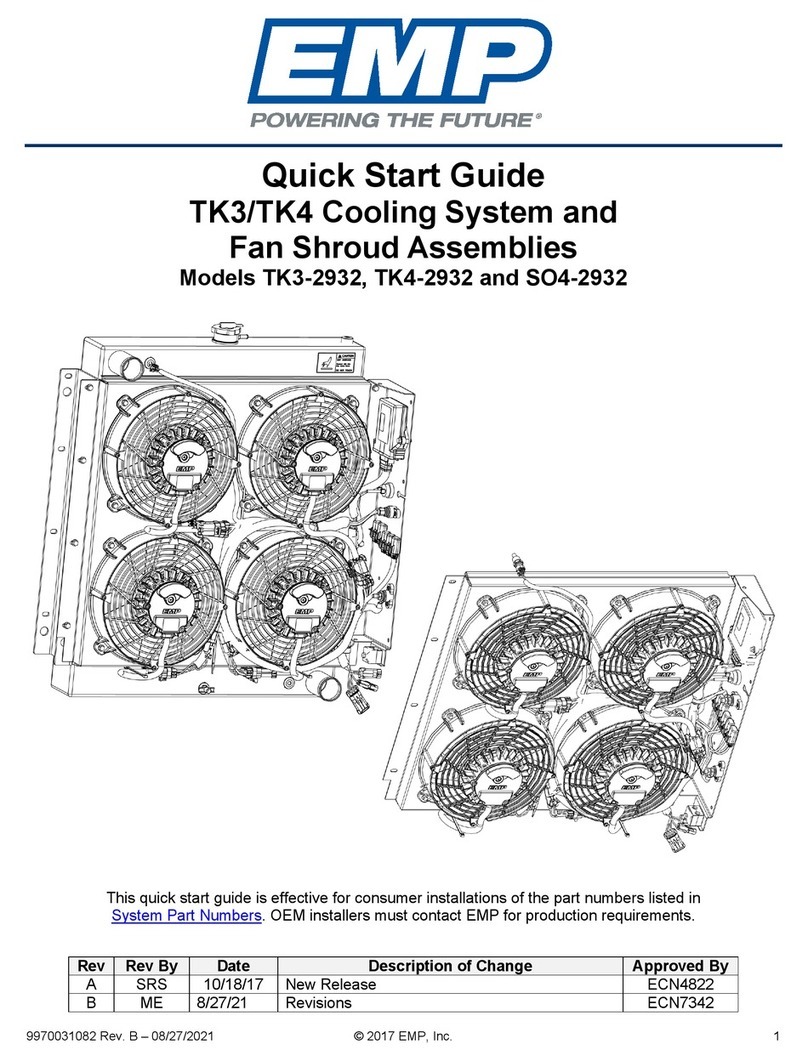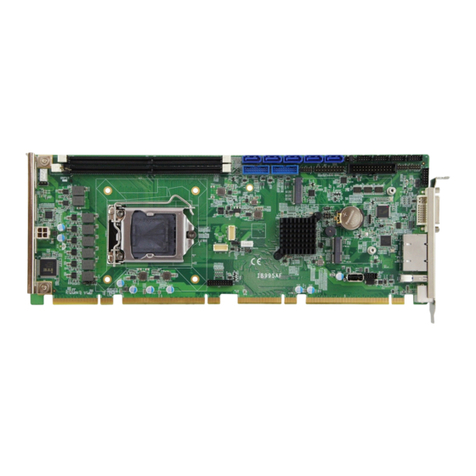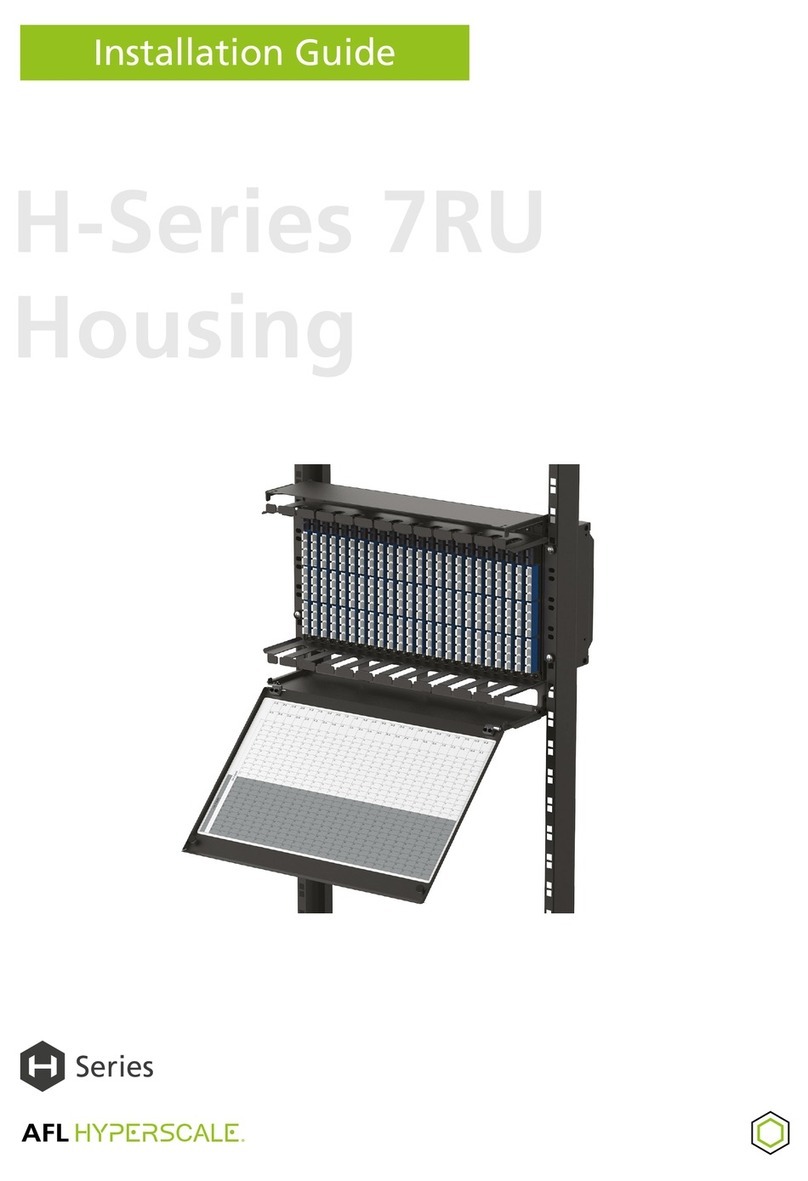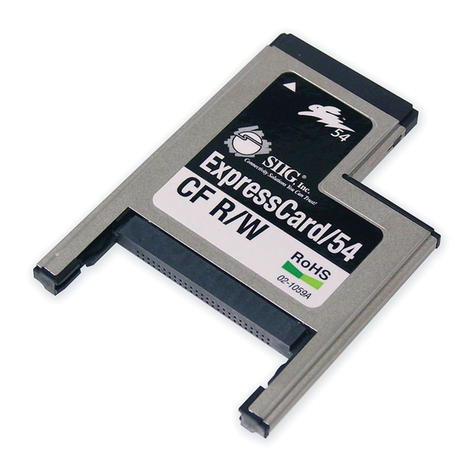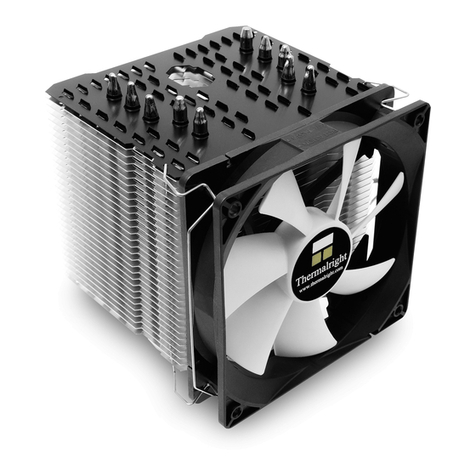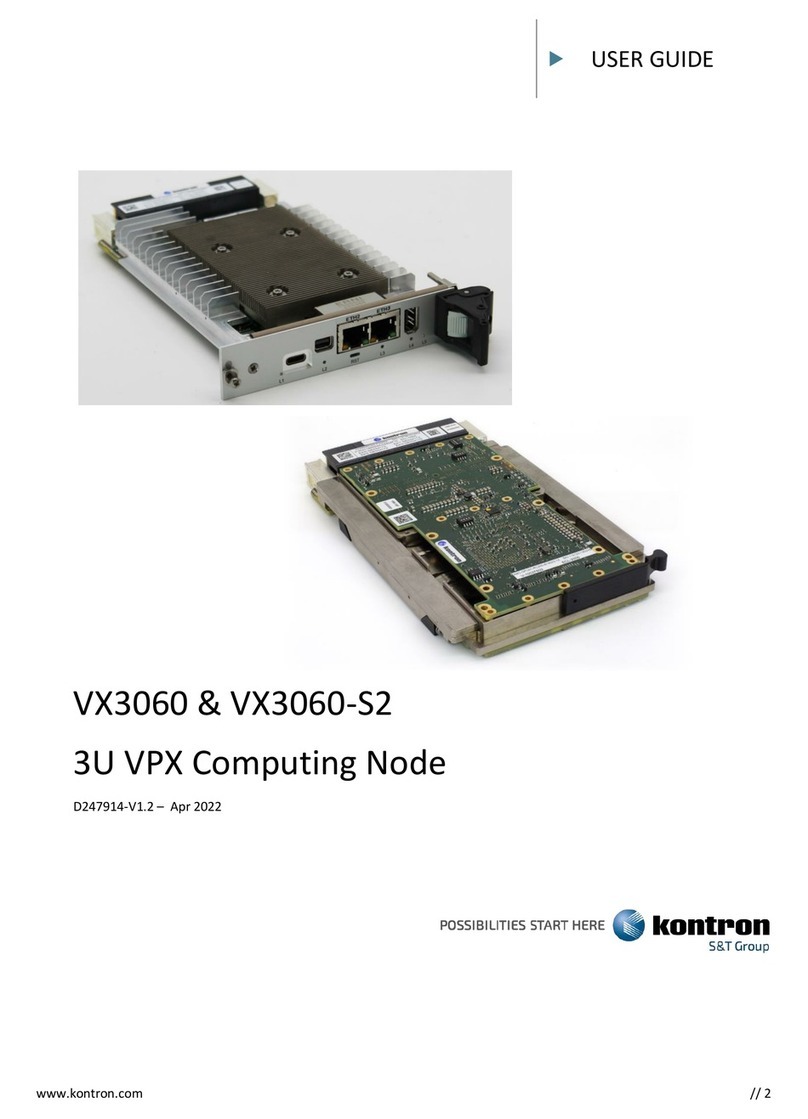EMP TK2 Manual

Installation, Service, and Troubleshooting Manual
TK2 Thermal System
Part Number
Serial Number
Description
2029069001
All
12V
2029069002
All
24V
2020021102
All
12V
2020021103
All
24V
Rev
Rev By
Date
Description of Change
Approved By
B
ELB
04/07/14
Revisions
ECN2881
C
JRB
4/18/16
Revisions
ECN3505
9970021075_Rev C – 4/18/16 © 2008 EMP, Inc. 1

Engineered Machined Products Inc.
2701 North 30th Street
Escanaba, MI, USA 49829
Phone: +1 (906) 789-7497
www.emp-corp.com
Service@emp-corp.com
Product Overview
The EMP TK2 thermal system is designed to provide supplemental cooling to the primary engine cooling
system for the purpose of:
•Reducing engine coolant temperature under high engine loads, preventing or eliminating the need for
the engine ECM to cutback fuel delivery and power.
•Reduce the operation of the mechanical fan to increase belt and clutch life and improve fuel efficiency.
The EMP TK2 thermal system can also be applied to any water, glycol, or other fluid system with similar
hydraulic properties for the purpose of cooling the auxiliary system.
The TK2 has two configurations based on a 12V or 24V vehicle electrical system. It contains a coolant
circulating pump, two fans, temperature sensor, and a high performance heat exchanger. The TK2 module is
plumbed into the vehicle cooling system in parallel to the main cooling system for large displacement engines,
and can be plumbed in parallel with the upper radiator hose for low displacement engines. The thermal system
control system is self-contained and designed to operate in conjunction with the other vehicle thermal controls.
The TK2 is provided with a base software configuration that is configured to work in harmony with the engine in
the vehicle. The software is designed to provide flexibility with reconfigurable software parameters that allow
customization of the control settings. The system activation temperatures and other features, including fan
reversal operation, can be adjusted. EMP can also provide service interface harnesses and the software
required to allow the user customize the thermal system for their application. Contact EMP Technical Support
for additional information on interface tools and software availability.
The information contained in this manual is updated periodically. While great care is taken in compiling the information contained in this manual,
Engineered Machined Products, Inc. cannot assume liability for losses of any nature arising from any errors and/or omissions.
The information and specifications contained throughout this manual are up to date at the time of publication. Engineered Machined Products, Inc.
reserves the right to change the content of this manual at any time without notice.
© 2008 EMP, Inc. 2

Table of Contents
Table of Contents
Product Overview..............................................................................................................................................2
Introduction........................................................................................................................................................4
Purpose .........................................................................................................................................................4
Service Technician Responsibilities...............................................................................................................4
Liability Disclaimer .........................................................................................................................................4
Definition of Terms.........................................................................................................................................4
Safety................................................................................................................................................................5
Warnings, Cautions & Notes..........................................................................................................................5
Product Safety Warnings ...............................................................................................................................5
Theory of Operation.......................................................................................................................................6
Installation.........................................................................................................................................................7
EMP Kit Installation Materials.........................................................................................................................7
Non-EMP Kit Installation Materials.................................................................................................................8
Schematics....................................................................................................................................................9
Mounting......................................................................................................................................................10
TK2 Power Connections ..............................................................................................................................14
Purging the System......................................................................................................................................15
Troubleshooting...............................................................................................................................................16
Test Service Procedures..............................................................................................................................17
Specifications...............................................................................................................................................19
Product Identification....................................................................................................................................22
Controller Pin Locations...............................................................................................................................23
Wiring Diagram................................................................................................................................................25
Parts List .........................................................................................................................................................26
Installation System Parts List.......................................................................................................................26
Service Parts List.........................................................................................................................................26
© 2008 EMP, Inc. 3

Introduction
Introduction
Purpose
The purpose of the Service Manual is to present information and procedures required to properly service and
maintain your cooling system.
Service Technician Responsibilities
Ensure that the Service Technician reviews the installation/service manuals and observes proper cautions prior
to maintenance on any of the system components. Familiarization will allow for accurate troubleshooting,
diagnosis and repairs.
Liability Disclaimer
EMP cannot anticipate every possible circumstance that might involve a potential hazard. The safety
messages in this document, in related manuals, and on the product are therefore not all inclusive. If a tool,
procedure, work method, or operating technique that is not specifically recommended by EMP is used, you
must satisfy yourself that it is safe for you and for others. You should ensure that the product will not be
damaged or be made unsafe by the operation, maintenance, or repair procedures that you choose.
Definition of Terms
LH = Left Hand
RH = Right Hand
CAC = Charge Air Cooler
JW = Jacket Water
LED = Light Emitting Diode
CAN = Controller Area Network
CS20 = System Controller
F-11 = 11” Fan with C20 Controller
© 2008 EMP, Inc. 4

Safety
Safety
Warnings, Cautions & Notes
Three types of headings are used in this manual to stress your safety and safe operation of the system.
They appear in the text as follows:
WARNING: This symbol is used to make you aware of an unsafe condition, hazard, or practice that
can result in personal injury or death.
CAUTION: This symbol is used to alert you to a condition or practice that can cause damage to the
system or the vehicle, or both.
NOTE: Is used to provide additional information that requires special attention by the technician.
Product Safety Warnings
WARNING: EMP cannot anticipate every possible circumstance that might involve a potential
hazard. The safety messages in this document, in related manuals, and on the product are therefore not
all inclusive. If a tool, procedure, work method, or operating technique that is not specifically
recommended by EMP is used, you must satisfy yourself that it is safe for you and for others. You should
ensure that the product will not be damaged or be made unsafe by the operation, maintenance, or repair
procedures that you choose.
WARNING: Ensure that all safety messages and information messages are read and understood
before installation, maintenance, or any repairs are performed. The person servicing may be unfamiliar
with many of the systems on the vehicle. It is important to use caution when service work is performed.
Knowledge of the vehicle system and operation are important before the removal or disassembly of any
component.
WARNING: Make sure the vehicle is in neutral, the parking brake is set, and the wheels are blocked
before doing any work or diagnostic procedures on the EMP component, system, or vehicle.
WARNING: Disconnect the main negative battery cable and/or switch off the battery disconnect
switch before installation or servicing.
WARNING: Use extreme caution when working on systems under pressure (i.e. coolant, hydraulic
fluids, air, fire suppression, etc…)
WARNING: Make sure the work area is ventilated and well lit.
WARNING: Make sure charged fire extinguishers are in the work area.
WARNING: Reinstall all safety guards, shields, and covers after servicing the vehicle.
WARNING: Make sure all tools, parts, and service equipment are removed from the engine
compartment and vehicle after all work is done.
WARNING: Ensure that all system power and ground connection points are torqued to EMP
specifications to prevent system damage. Failure to follow specified torque requirements at any point of
the vehicle system power and ground can result in loose connections which can damage electronic
components on EMP components and systems and will void EMP warranty.
© 2008 EMP, Inc. 5

Installation
Theory of Operation
The TK2 has two configurations based on a 12V or 24V vehicle electrical system. It contains a coolant
circulating pump, two fans, two fan controllers (one master and one slave), temperature sensor, and a high
performance heat exchanger. The thermal system control system is self-contained and designed to operate in
conjunction with the other vehicle thermal controls.
The system is wired to the vehicle for power, ground and ignition (wake up). Even when power and ground are
“hot”, the system will not respond until the ignition signal is provided (a 12V or 24V input).
Upon ignition, the system thermistor input is received and interpreted by the CM20 (Master) controller, which is
programmed to command fans and pump speeds in response to temperature input. All components will be
commanded “OFF” until the minimum temperature set points are reached. The fans will come on at their
minimum speed at a particular temperature and ramp up in speed to max speed at the fan max temperature
set point. The pump will come on at a pump min temp and ramp up to max speed at the pump max
temperature set point.
The TK2 is provided with a base software configuration that is configured to work in harmony with the engine in
the vehicle. The software is designed to provide flexibility with reconfigurable software parameters that allow
customization of the control settings. The system activation temperatures and other features, including fan
reversal operation, can be adjusted. EMP can also provide service interface harnesses and the software
required to allow the user customize the thermal system for their application. Contact EMP Technical Support
for additional information on interface tools and software availability.
The base software configuration for specified EMP part numbers are as follows:
12V 20200211022
Fan On (1000 rpm)
90C
Fan to Max (4000
rpm)
96C
Pump On (1200 rpm)
90C
Pump to Max (3600
rpm)
94C
24V 20200211023
Fan On (1000 rpm)
90C
Fan to Max (5000
rpm)
96C
Pump On (1200 rpm)
90C
Pump to Max (3600
rpm)
94C
The component controllers are all on an independent CAN network (does not interface with the vehicle) with
the following component addresses:
•CM20 Master and Fan Controller – 139 (hex 8B)
•C20 Fan Controller – 138 (Hex 8A)
•WP29 Pump – 32 (Hex 20)
In the event of a loss of CAN communication between the component controllers, the fans will default to 4000
rpm and pump will default to 3600 rpm.
Two additional features are provided on production systems.
1. At start up, fans are commanded to reverse at 4000 rpm for 10 seconds. This provides an initial
clearing of debris from the heat exchangers.
2. At ‘ignition off’ the pump will run at default speed for 30 seconds to continue to circulate coolant through
the heat exchanger.
*2029069001 and 2029069002 are obsolete. If you have questions about your specific settings, send the serial
numbers of your pump and 2 controllers to service@emp-corp.com with your question.
© 2008 EMP, Inc. 6

Installation
Installation
EMP Kit Installation Materials
Available Kits Table 1
Part Number
Description
1370021060
Bracket Installation system
3170021062
Wire Harness Installation System
1370021061
Hose Installation System
NOTE: The EMP Bracket Installation System is REQUIRED for all frame rail installations. The EMP
customer warranty will be voided if non-EMP designed mounting brackets are used for frame rail
installations. Table 2
Bracket Installation System - 1370021060
Description
Quantity
Module to Vehicle Frame Brackets
2
M16 x 2.0 x 60 Flange Head Bolts
4
M16 x 2.0 x Flange Locking Nuts
4
Table 3
Wire Harness Installation System - 3170021062
Description
Quantity
20’ of 6 AWG Power and Ground Cables
1
100A Fuse Link
1
30’ of 14 AWG Ignition Wire
1
Split Loom
1
5/16 and 3/8 Ring Terminals
1
Heat Shrink Tubing and Insulation Boot
1
Table 4
Hose Installation System - 1370021061
Description
Quantity
40’ Heater Hose
1
1 ¼ “ Split Loom
1
Hose Clamps
4
Additional Parts
1. Tees and/or 1” steel nipples to interface with engine radiator pipes.
2. Nylon tie straps and p-clips for securing hose and wiring to vehicle.
© 2008 EMP, Inc. 7

Installation
Non-EMP Kit Installation Materials
NOTE: Hose must meet or exceed SAEJ20R1 requirements. Gates Green Stripe or Davco Gold Stripe are
identified products.
Table 5
Plumbing
Description
Quantity
Tees with 1” Ports (For Rubber Radiator Pipes)
2
1” Steel Nipples (To be Welded on Steel Coolant Pipes)
2
Tee with two 1” Ports (For Lower Coolant Flow Engines)
1
1¼“ Hose Clamps
4
2” + Hose Clamps (For Upper and Lower Radiator Lines)
4
1” Heater Hose
As Needed
1 ¼ “ Convoluted Tubing
As Needed
Table 6
Electrical
Description
Quantity
6 AWG Ground Cable
As Needed
6 AWG Battery Power Cable with 100A Fuse Link
As Needed
16 AWG Wire for Ignition Circuit
As Needed
3/8 Ring Terminal
1
5/16 Ring Terminal
1
5A In-line Fuse Holder
1
Heat Shrink Tubing
As Needed
Insulation Boot
2
1/4" Split Convoluted Tubing
As Needed
Table 7
Hardware
Description
Quantity
5/8” x 2¼” Grade 8 Bolts (Minimum)
4
Grade 8 Washers
8
5/8” Grade 8 Nuts with Mechanical Lock (Minimum)
4
© 2008 EMP, Inc. 8

Installation
Schematics
The auxiliary cooling system schematics shown below refer to large and low displacement engines.
Figure 1 – Secondary Cooling Schematic Plumbed into the Vehicle Cooling System in
Parallel to the Main Cooling System for Large Displacement Engines
P
Engine
P
Engine Radiator
EMP Thermal Kit
EMP Thermal Kit Plumbing Lower Coolant Flow Engines
Thermostat
Figure 2 – Secondary Cooling Schematic Plumbed into the Vehicle Cooling System in
Parallel to the Upper Radiator Hose for Low Displacement Engines
© 2008 EMP, Inc. 9

Installation
Mounting
The TK2 is configured to be mounted with the heat exchangers vertical and in a cross flow configuration. The
vent and drain feature incorporated into the heat exchanger mounting posts and the water pump are positioned
for this orientation. The electronic components are also orientated to provide optimum performance in this
orientation.
The TK2 should not be placed where it becomes the highest point in the jacket water cooling system. If this is
necessary, the cooling system surge tank or the cooling system reservoir should be relocated above the
thermal system.
Location
•Choose a rigid spot on the vehicle frame rail or body that is exposed to ambient air (cleaner and cooler
is better) and as close as possible to the radiator pipes to minimize the length of the coolant hoses.
•Consider the routing of the hoses and power cable s when selecting location.
•The TK2 without mounting brackets is 25¼” wide x 21½” high x 12” deep.
•Minimum package dimensions are shown below. (See Figure 3)
•The minimum clearance from the front of the unit must be at least 4”, but it is recommended that it be
clear.
•The minimum clearance for the bottom of the unit is 9”.
•The minimum clearance for the back of the unit is 3”.
•The top requires only enough space to prevent interference.
3"
4"
9"
25 ¼"
30 ½"
19"
Figure 3 – Package Requirements
© 2008 EMP, Inc. 10

Installation
Example Mounting Locations
Figure 4
Figure 5
Figure 6
© 2008 EMP, Inc. 11

Installation
Frame Rail Drilling and Mounting
CAUTION: Check the back side of the
frame rail, in the area of the holes to be drilled,
for fuel lines, wiring, air tanks, etc.
CAUTION: Do not weld on the frame rails.
Doing so could result in serious electrical system
damage to the vehicle.
NOTE: Avoid drilling too close to the frame rail
flanges.
NOTE: It is recommended that a magnetic drill
press or similar piece of equipment be used to
simplify drilling through the frame rail.
1. If existing holes in the frame do not line up
with the desired location of the TK2, then
additional frame holes must be drilled.
2. The holes should be spaced at least 4” apart
vertically.
3. Lift the TK2 with a transmission jack or similar
type of lifting device.
4. Fasten the TK2 brackets to the frame rail
with (4) 5/8” x 2 ¼” Grade 8 bolts,(8) Grade
8 washers,(4) 5/8” Grade 8 lock nuts.
Engine Coolant Pipe Modifications
WARNING: BURN HAZARD - Hot coolant
(200°F+) under 15 PSI system pressure. The
engine cooling system should never be accessed
when the engine is hot. Allow engine to cool
before accessing the cooling system.
Larger Displacement Engines with High
Coolant Flow from Engines Water Pump
The coolant supply from the engine will be taken
from the upper radiator pipe after it exits the
thermostat on the engine and before it goes into the
main radiator.
NOTE: Do not allow the port and hose routing to
be the highest point in the cooling system. The
upper radiator pipe is usually close to the highest
point in the engine cooling system. A high
placement of the port can allow air to enter the
auxiliary system if the cooling system level is not
full.
The coolant return from the thermal system to the
engine will go into the lower radiator pipe after it
leaves the main radiator and before it enters the
main engine water pump. Keep the following in
mind when selecting port locations for the upper
and lower radiator pipe:
•Account for routing of 1” heater hose
covered with convoluted tubing running to
the ports.
•Orient the new ports so that the hose
routings will be out of the way of other
components on the engine.
Steel Pipe Modification
1. Drain the coolant from the engine.
2. Mark the upper and lower pipes on the
vehicle for the location and orientation of the
exit.
3. Remove the pipes from the vehicle.
4. Drill a 0.875” diameter hole in the pipes in
the orientation where the hose will exit the
pipe.
5. Adjust the nipple to fit the pipe by
contouring the nipple to the tube.
6. Weld the nipples to the existing pipes.
7. Pressure check with air at 25 PSI for leaks.
8. If necessary, repaint pipes to provide
corrosion protection around the weld.
9. Reinstall the pipes onto the vehicle.
Rubber Hose Modification
1. Drain the coolant from the engine.
2. Mark the location where the union will be
placed.
3. Cut 1” from the hose to allow the port ample
space in the hose.
4. Slide hose clamps over each hose segment.
5. Slide the hose segments over each end of
the Tee and tighten the hose clamps over
the hose around the Tee ends.
Smaller Displacement Engines with Lower
Coolant Flow from Engine’s Water Pump
The engine coolant supply and return will be taken
from the upper radiator pipe after it exits the
thermostat on the engine and before it goes into the
main radiator.
NOTE: The pump programming for lower coolant
flow applications must be changed so the pump
runs continuously when the TK2 receives ignition
power.
NOTE: Do not to allow the port and hose routing
to be the highest point in the pipe. The upper
radiator pipe is usually close to the highest point
in the engine cooling system. A high placement
of the port can allow air to enter the auxiliary
system if the cooling system level is not full.
© 2008 EMP, Inc. 12

Installation
1. The upper radiator hose must be cut to
allow either (2) Tees to be installed or a
special Tee that incorporates both the inlet
and outlet nipples for the TK2.
2. Refer to “Steel Pipe Modification” or
“Rubber Hose Modification” for Tee
installation.
3. Coolant Hose Connections.
CAUTION: Any hosing, tubing, battery
cable, wiring or electrical harness must not rub
on a sharp edge.
CAUTION: Any hosing, tubing, battery
cable, wiring or electrical harness must not rub or
make contact with a hot surface. There should be
5” minimum clearance from the exhaust.
CAUTION: Any hosing, tubing, battery
cable, wiring or electrical harness should be
supported at least every 18" to 20".
4. Run (2) 1” heater hose lengths wrapped in
1¼” split conduit from the TK2 to the ports
installed on the radiator pipes. Secure with
hose clamps.
5. Attach the engine coolant return hose to the
TK2 radiator outlet port securing with hose
clamps. (See Figure 7)
6. Attach the engine coolant supply hose to
the TK2 water pump inlet port securing with
hose clamps. (See Figure 7)
Figure 7 - Coolant Line Connections on Secondary Radiator
© 2008 EMP, Inc. 13

Installation
TK2 Power Connections
WARNING: The electric fans and/or electric water pump may start without notice after the ignition
wire is connected.
CAUTION: Make sure the water system is full before the positive wire is connected. Do not run the
auxiliary electric water pump dry.
CAUTION: Any hosing, tubing, battery cable, wiring or electrical harness must not rub on a sharp
edge.
CAUTION: Any hosing, tubing, battery cable, wiring or electrical harness must not rub or make
contact with a hot surface. There should be 5” minimum clearance from the exhaust.
CAUTION: Any hosing, tubing, battery cable, wiring or electrical harness should be supported at
least every 18" to 20".
Figure 8 – Power and Ground Stud Assembly
Figure 9
Ring Teminals Must Be In
Direct Contact!
To Key Power On
© 2008 EMP, Inc. 14

Installation
WARNING: Assemble and torque terminal
as shown or serious injury or damage may occur.
1. Run a 6 AWG Red wire covered in split
loom with an in-line 100A fuse from the Red
terminal post on the TK2 to the starter,
battery disconnect switch or positive battery
terminal.
NOTE: Position the fuse close to the power
source to protect the wire in the event of a short
circuit.
2. Connect the Red wire to the TK2 positive
post with a 5/16 ring terminal as shown
above and torque to 120 ± 10 In-lbs.
Provide a protective boot on the cable.
3. Run a 6 AWG Black wire covered with split
loom from the Black post on the TK2 to the
negative battery terminal or chassis ground.
4. Connect the Black ground wire to the TK2
with a 3/8 ring terminal and torque to 144 ±
12 In-lbs.
5. Connect the other end of the Red positive
wire to the starter, battery disconnect
switch, or positive battery terminal.
6. Connect the other end of the Black ground
cable to a negative battery terminal or
chassis ground.
7. Run the 16 AWG Purple wire covered in
split loom from ignition power on the vehicle
to the ignition connector on the system.
Purging the System
CAUTION: DO NOT exceed 25 PSI when
applying air pressure to the cooling system to
check for leaks.
1. Fill and top off the cooling system with
vehicle recommended coolant.
2. Remove the bleeder plug from the TK2,
located top left side of the unit, until air is
purged out.
3. Start the vehicle, monitor the coolant level
and top off as necessary until the engine
has achieved operating temperature and the
coolant level has stabilized.
4. Disconnect the 6 pin connector from the
TK2 water pump while the engine is running
and continue to monitor the vehicle’s fluid
level. Fill as necessary until the coolant
level has stabilized. Re-connect the 6 pin
connector on the TK2 water pump.
5. Periodically check the coolant level after the
vehicle has been placed in service.
© 2008 EMP, Inc. 15

Troubleshooting
Troubleshooting
Symptom Check
System does not operate.
•Verify the vehicle ignition is in the “ON” position.
•Is the coolant temperature above the system activation
temperature? (Default Temp is 186°F (86°C)
•Check system fuse.
•Verify power to the power terminal.
•Verify power to the key switch enable.
System does not wake-up on vehicle key
switch enable (default will reverse the
fans for 10 seconds on ignition enable).
•Verify the vehicle ignition is in the “ON” position.
•Verify there is 12/24 Volts on the positive (red) power
terminal in the thermal system.
•Verify there is 12/24 volts on the enable wire (purple
single
pin connector).
•Verify the system fuses intact.
•Will the unit operate in default condition?
Both fans operate continuously at default
Speed.
•Temperature sensor fault.
•Loss of CAN communication.
Lower fan runs continuously at default speed.
•No CAN Communication:
•Check the 6 pin connector on the lower controller and
verify connector is engaged.
•Remove connector and make sure the pins are properly
seated in the connector.
•Repeat the procedure on the upper controller.
Pump operates continuously.
•No CAN Communication:
•Check the 6 pin connector on the lower controller and
verify connector is engaged.
•Remove connector and make sure the pins are properly
seated in the connector.
•Repeat the procedure on the upper controller.
Fan not running.
•Ensure the fan/controller connection is properly seated.
•Ensure the controller power harness is properly seated.
•Verify the controller is receiving battery voltage.
•Verify the ignition line is seeing battery voltage.
•With power disconnected verify the fan spins freely.
•Verify the communication signal is properly working (if
used).
Fan is running intermittently.
•Verify fan/motor connection is properly seated.
•Verify ignition signal is not intermittent.
•Verify the communication signal is properly working (if
used).
Fan is making rattling noises when running.
•Verify the finger guard is firmly attached.
•Verify the fan blade is firmly attached.
•Verify the mounting bolts are torqued properly.
CAN not operating properly.
•Check communication harness wiring.
•Verify that CAN messages are being transmitted in the
proper formats (see online Technical Guide or contact
EMP Technical Support for CAN message details).
•Verify that the proper component CAN address is being
used.
© 2008 EMP, Inc. 16

Troubleshooting
Test Service Procedures
The following procedures will allow the technician to identify most of the problems that can occur with the
thermal system as well as address the issues.
TSP1 Checking Supply Power
•Verify there is 12/24 Volts on the positive (red) power terminal.
•Measure between the red positive terminal and black ground terminal on the module.
•If there is no voltage at the red terminal, there is an open circuit on either red power cable or the black
ground cable. Perform TSP2 and TSP3.
TSP2 Verify Ground Terminal Integrity
•Use the volt meter and adjust setting to measure continuity.
•Place one lead on the ground (black) terminal and the second lead on the vehicle frame to validate the
ground cable is properly connected. The meter should show very low resistance and/or beep to indicate
a circuit.
TSP3 Checking Main System Fuse
•Trace the power cables from the thermal system back to the power source, alternator or battery.
•Verify that the cable is properly connected to the electric system.
•Visually inspect the fuse through the clear shrink wrap approximately 6 inches from the ring terminal. The
fuse is visible through the shrink wrap. Opposite the blue plastic cover with the “100” designation, the
fuse element is a silver bar through the center of the window in the fuse. If the bar is burnt or broken, the
fuse needs to be replaced.
•Before replacing the fuse, verify whether there was a short to ground along the cable, or a short across the
positive cable on the system. Replacing the fuse without identifying the cause of the failure will likely
result in the failure of the new fuse.
•Inspect the cables and check continuity between the ring terminal and chassis ground before installing the
new fuse in the harness. Replace the fuse using TSP4.
TSP4 Fuse Replacement
•Remove the power cable ring terminal from the power source.
•Use a utility knife to score the clear shrink wrap and peal it away from the failed fuse. Use care not to
damage the red wire insulation.
•With a die grinder, file, or sanding disk, grind the copper rivet head off the fuse side of the ring terminal on
each side.
•Install the new fuse with the two M5 stainless flange head nuts and bolts. Torque the bolts to 2.25±0.25 Nm
(20±2 in-lbs). Slide the clear shrink wrap over the fuse and shrink into place using a heat gun. Be aware
of other heat sensitive items before using the heat gun.
•Verify that there is not a short to ground by rechecking continuity between the cable and to chassis ground
before reconnecting the ring terminal to the power source. If there is continuity detected, inspect the
length of the cable to find the ground fault.
TSP5 Checking Key Switch Enable Power
•Unplug the key switch single pin connector above the fuse center.
•Verify that the vehicle ignition is “ON.”
•Measure the voltage on the wire from the vehicle relative to the black ground terminal.
•If the voltage is 12V or 24 V, the key switch power is correctly wired.
•Switch the vehicle ignition to “OFF”.
•Again measure the voltage on the wire from the vehicle relative to the black ground terminal.
•The voltage should decay to zero when switched off.
•If both conditions are met, reconnect the wire to the thermal system.
© 2008 EMP, Inc. 17

Troubleshooting
TSP6 Checking the Individual Component Fuses
•Verify that the system fuses are intact. Remove the fuse holder from the cover by pushing down the locking
tab and pushing the fuse block back off the cover to expose the fuses.
•The fuses can be checked visually or by using a multi-meter.
•The fuses can be removed and visually inspected.
•Use the multi-meter to verify voltage on both sides of each fuse relative to the black ground terminal.
•Use the multi-meter to measure continuity across the individual fuses, or from the red terminal to each side of
each fuse.
TSP7 Checking Temperature Sensor Function/Defaults
WARNING: Disabling the temperature sensor while the system is powered on will cause all
components to start and run at default speeds. The fans will be moving air to the back face of the unit,
and directly into the face of the technician who is disconnecting the temperature sensor.
•If the power has been verified, the next diagnostic step is to disable the temperature sensor input and verify
that all components operate at their default speeds.
•Turn the vehicle ignition off before disconnecting the temperature sensor.
•Disconnect the temperature sensor. The sensor connector is a two pin connector with a locking tab. Lift the
locking tab and pull the body straight back, DO NOT PULL ON THE WIRE, pull on the connector body.
Allow the wire to hang loose away from the fans.
•With the temperature sensor disconnected, turn the ignition back on. The pump and fans will all go to default
speed once the vehicle ignition is enabled. If the system remains inoperable, recheck the power and
ignition enable to the module.
TSP8 CAN Connection Verification
•Loss of CAN to an individual component will cause the component to operate at default speed independent
of the system temperature.
•Disconnection of the 6 pin connector from the C20 controller or WP29 water pump will cause the
component to go to default speed. Disconnection of the 6 pin connector from the CM20 controller will
cause all components to go to default speed.
TSP9 Deutsch Connector Verification
•The thermal system utilizes Deutsch connectors for power and communication interfaces between the
harnesses and electric components. These connectors feature a push to seat pin design and a plastic
locking feature that holds the pins after they are seated.
•Verify the connector is locked into its mate.
•If the connector is undone, verify the pins are visible behind the lock. Evidence of an unlocked pin will be a
black powder around the pin opening and potentially some thermal distortion of the plastic in the area of
the pin.
TSP10 Fan Motor Verification
•To verify that there is no problem with the component causing the problem with the controller, the following
procedure can be used to check the motor and wiring on the fan.
•Disconnect the 4 pin Deutsch connector between the component and the controller.
•Using a multi-meter, measure the resistance between all three pins and record in the following table:
© 2008 EMP, Inc. 18

Troubleshooting
Measurement
Acceptable Reading
Pin 2 to 3
0.2 to 0.4 ohms
Pin 2 to 4
0.2 to 0.4 ohms
Pin 3 to 4
0.2 to 0.4 ohms
Pin 2 to Aluminum Housing
Open Circuit
Pin 3 to Aluminum Housing
Open Circuit
Pin 4 to Aluminum Housing
Open Circuit
•If the reading is outside of the “Acceptable Reading” value, the fan should be replaced.
TSP11 Controller Diagnostics
•To verify there is not a catastrophic problem with the controller:
•Disconnect the 4 and 6 pin connectors from the face of the CM20 or C20 Controller
•Disconnect the flying lead from the fan component.
•Measure the following resistance from the component power flying lead:
Measurement
Acceptable Reading
•Pin 2 to Aluminum Housing
•Open Circuit
•Pin 3 to Aluminum Housing
•Open Circuit
•Pin 4 to Aluminum Housing
•Open Circuit
•If there is a circuit to the housing, the controller should be replaced.
Specifications
Standard Configurations
Voltage
24V
12V
Pump On at Min
RPM Temperature
194°F
(90°C)
194°F
(90°C)
Pump at Max RPM Temperature
201°F
(94°C)
201°F
(94°C)
Pump Min RPM
1200 RPM
1200 RPM
Pump Max RPM
3600 RPM
3600 RPM
Pump Default RPM
3600 RPM
3600 RPM
FAN On at Min
RPM Temperature
194°F
(90°C)
194°F
(90°C)
FAN at Max RPM Temperature
205°F
(96°C)
205°F
(96°C)
Fan Power Shutdown Time
0 s
0 s
Fan Min RPM
1000 RPM
1000 RPM
Fan Max RPM
5000 RPM
4000 RPM
Fan Default RPM
4000 RPM
4000 RPM
Number of Steps
60**
60**
© 2008 EMP, Inc. 19

Troubleshooting
Physical Characteristics
Module Width
25.2
Inches
Module Depth
12.5
Inches
Module Height
21.6
Inches
Dry Module Weight
With Frame Mounts
105
130
Pounds
Pounds
Operating Range
Purchased System
Voltage
24V
12V
Minimum Operating Voltage
18
9
VDC
Nominal Operating Voltage
26
13
VDC
Maximum Operating Voltage
32
16
VDC
Maximum Operating Current
50 @
27.0V
60 @
13.5V
Amps
Rated Environmental/Operating Conditions
Minimum Operating Fluid Temperature
-40°F (-40°C)
Maximum Operating Fluid Temperature
203°F (95°C)
Minimum Storage Temperature –
Ambient
-58°F (-50°C)
Maximum Storage Temperature –
Ambient
140°F (60°C)
Minimum Fan Operating Speed
1000 RPM
Maximum Fan Operating Speed – 12
VDC
4000 RPM @ 13 VDC
Maximum Fan Operating Speed – 24
VDC
5000 RPM @ 26 VDC
Minimum Pump Operating Speed
1200 RPM
Maximum Pump Operating Speed
3600 RPM
© 2008 EMP, Inc. 20
Table of contents
Other EMP Computer Hardware manuals
Popular Computer Hardware manuals by other brands
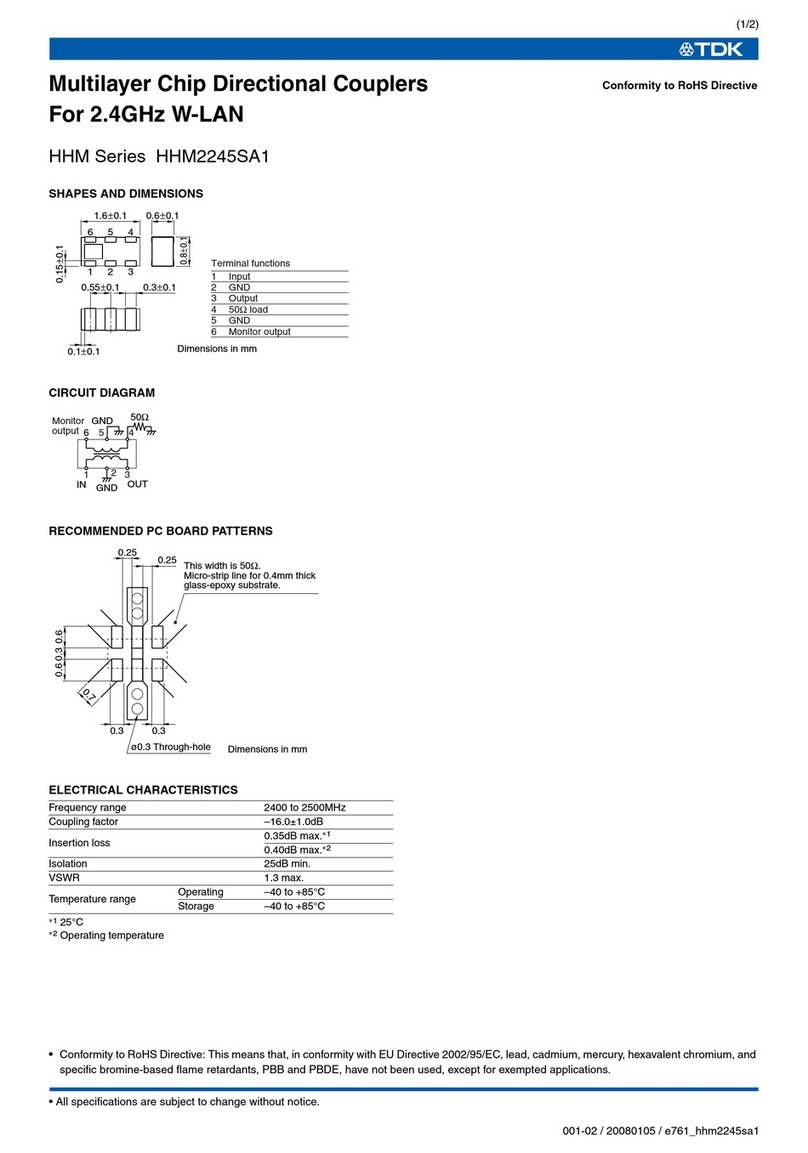
TDK
TDK HHM Series HHM2245SA1 Specifications
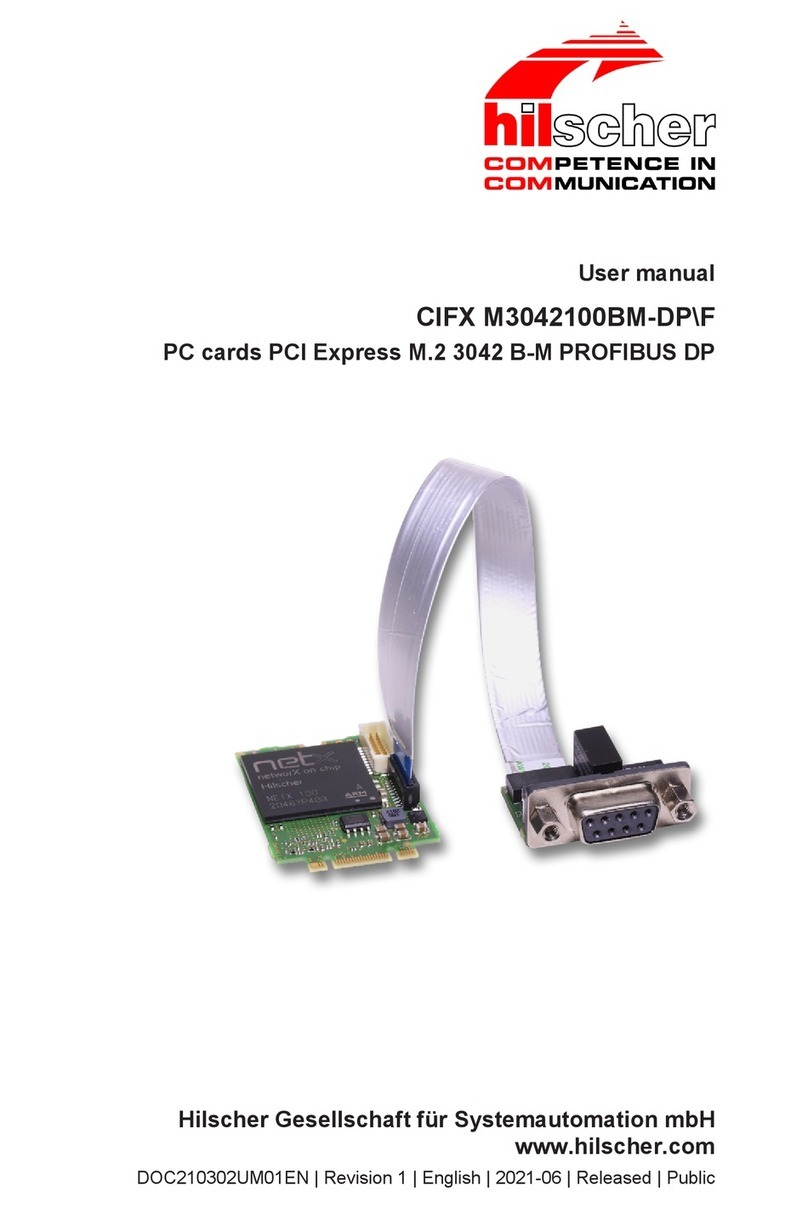
hilscher
hilscher CIFX M3042100BM-DP/F user manual

Commodore
Commodore Amiga 2630 user guide

mikroElektronika
mikroElektronika multimedia workStation v7 user guide
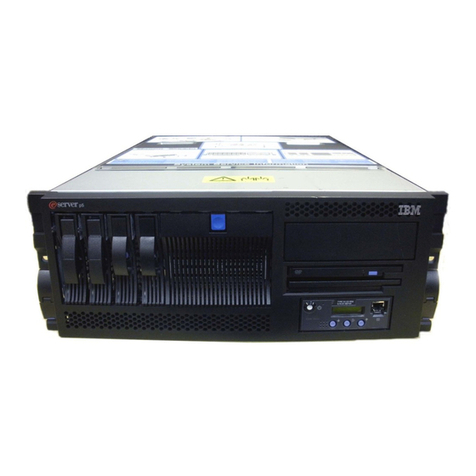
IBM
IBM p5 550 Technical overview and introduction
NXP Semiconductors
NXP Semiconductors S32K344 user manual
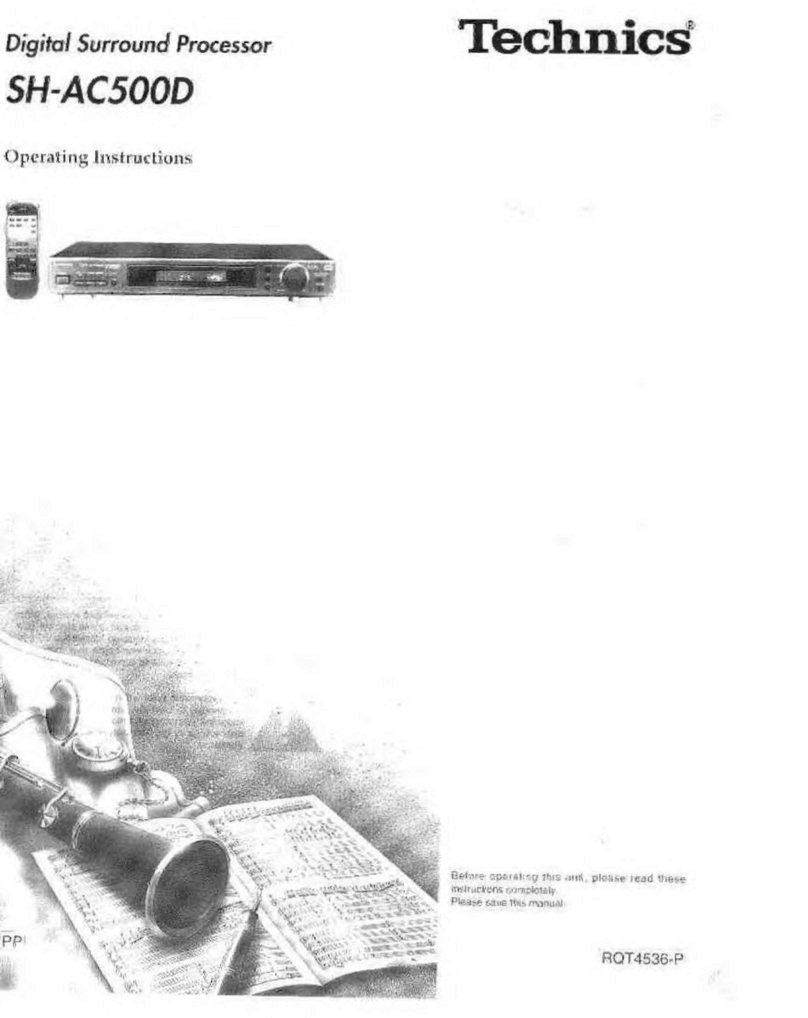
Technics
Technics SH-AC500D operating instructions
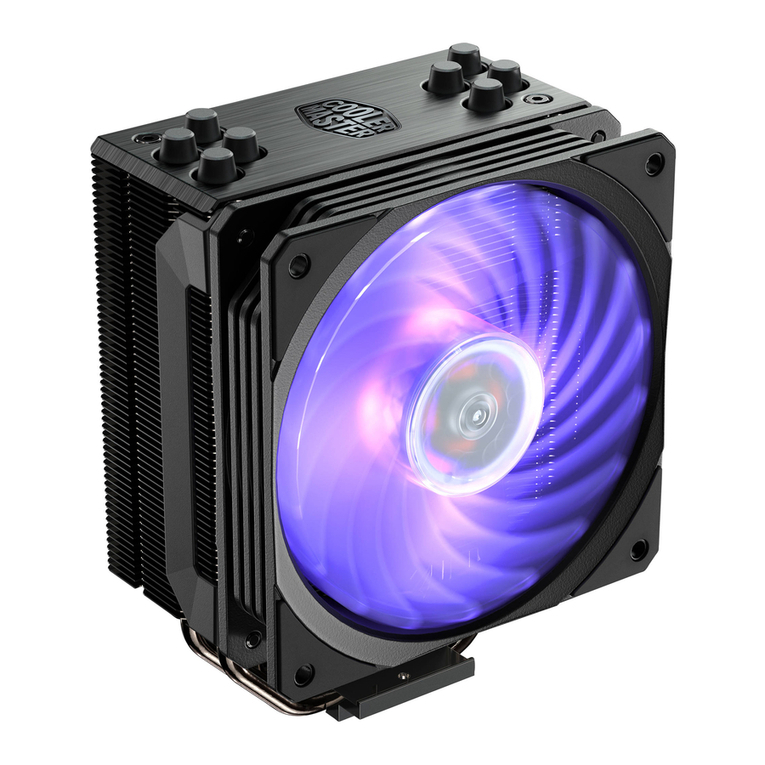
Cooler Master
Cooler Master HYPER 212 RGB BLACK EDITION user manual
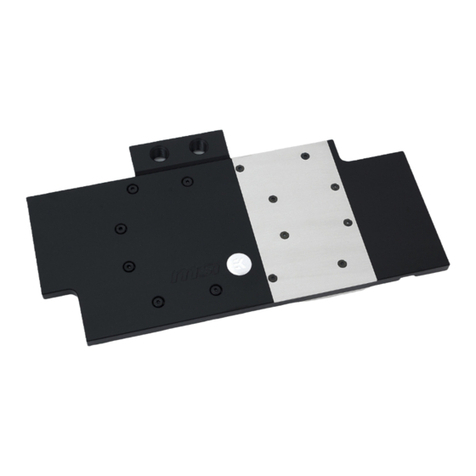
ekwb
ekwb EK-FC980 GTX Ti TF5 Series INSTALLATION AND MOUNTING MANUAL
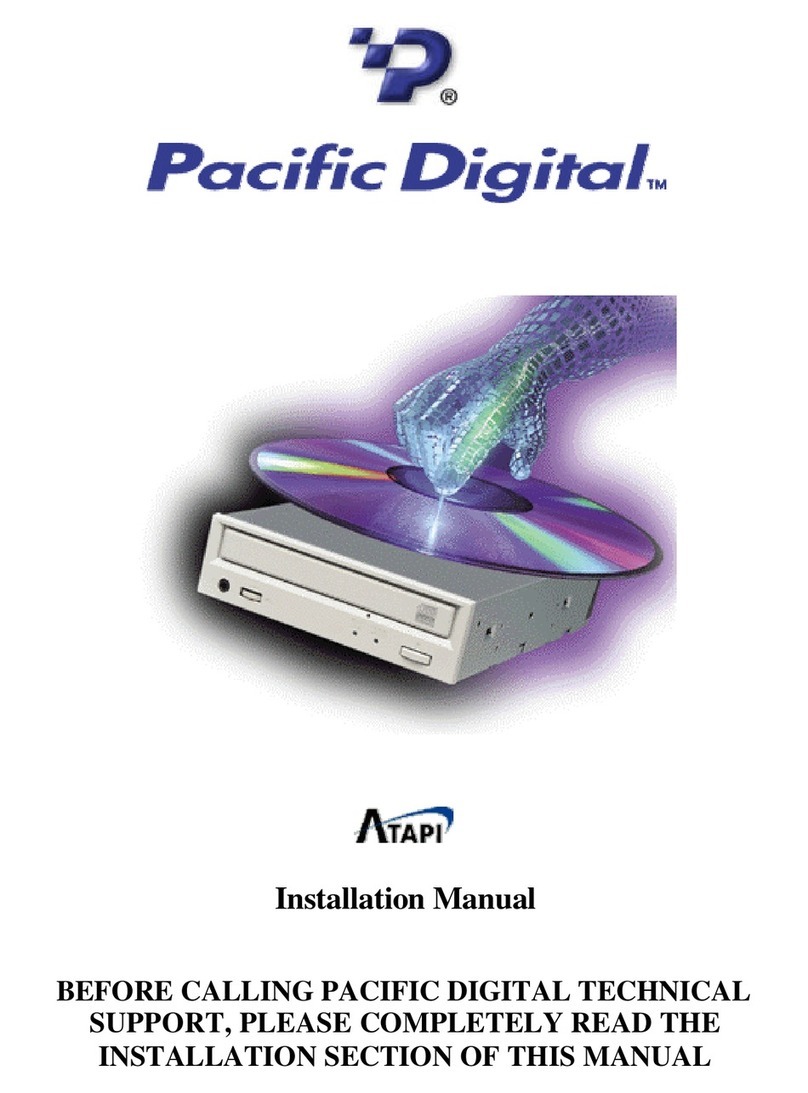
Pacific Digital
Pacific Digital PDCdrive installation manual
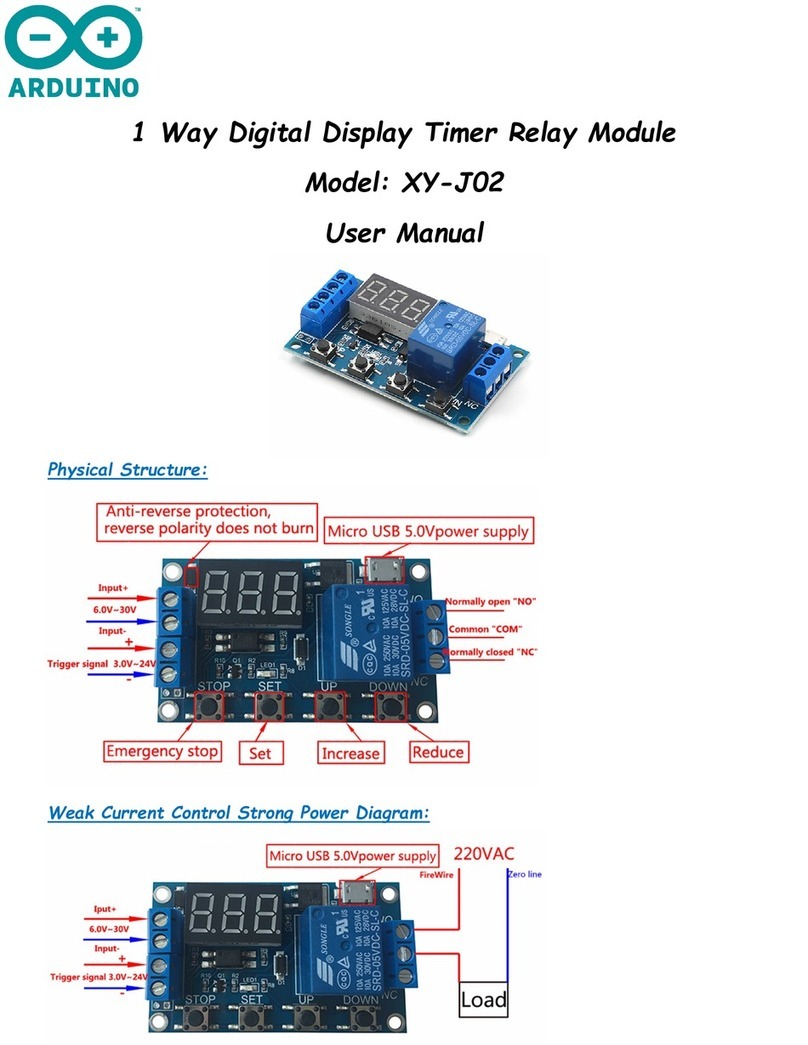
Arduino
Arduino XY-J02 user manual
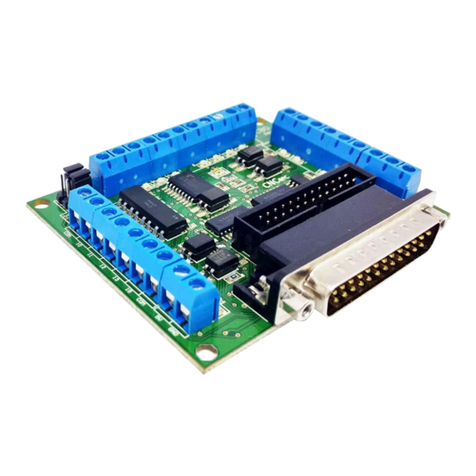
CNC4PC
CNC4PC C80 user manual
